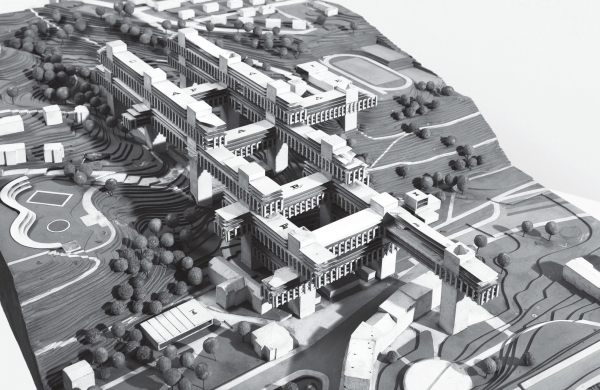City above the City – Karel Prager’s Vision
House over house, city over city, new construction type
National Museum, Prague, 25.02.2011 – 17.04.2011

Kísérleti lakótelep Prága, 1973-1975, fotó: Tomáš Souček
Ten years after the death of one of the most significant and controversial Czechoslovakian architects the CCEA in cooperation with the National Museum present the public with his project of the seat of the Federal Assembly as well as his interest in macrostructures.
Pragner’s realisation of the National, or Federal, Assembly building is considered an initial impuls for him to design a grandiose spatial concept of redeveloping the city. The 1966 project reflected a competition requirement that the building should be possible to transform into a house of culture.
The building served as a domicile of Radio Free Europe from 1990s to 2009 when the property was taken over by the National Museum. It thus took nearly forty years before the building was made open to public so that its primary cultural function was fulfilled. A symbol of its time – often hated and ignored – it was declared a cultural heritage in 2000. Considering the period and political background of its origination its technical maturity is remarkable. Its constructional and architectural quality excel worldwide. Its artwork concept was altered in the course of construction after the historic events of 1968. Some models of the original exterior decorations, e.g. sculptures by M. Chlupáč, R. Uher, O. Zoubek and a master copy of a mobile sculpture by L. Novotný, are displayed at the exhibition.
Karel Prager designed the Federal Assembly as a „house over house“. He then developed the principle into a „city over city” when he suggested using bridge structures to grow the city into a third dimension instead of its growth out into the surrounding areas. Convertible units – e.g. flats, administration, culture or sport – that were possible to meet spatial requests and needs of residents represented a flexible part of the construction. In 1970s when prefabricated housing development was well under way customer requests oriented variability is hardly conceivable. This is but a study on experimental residential development that was supported by the authorities; it should have suggested a solution to social and urban problems. Even though Pragner’s vision of a “city over city” has never come to life, it has been attracting attention by its grandness and generosity. It belongs undoubtedly among outstanding world macrostructure projects that represent a distinct trend in architecture of 1960s and 1970s.









